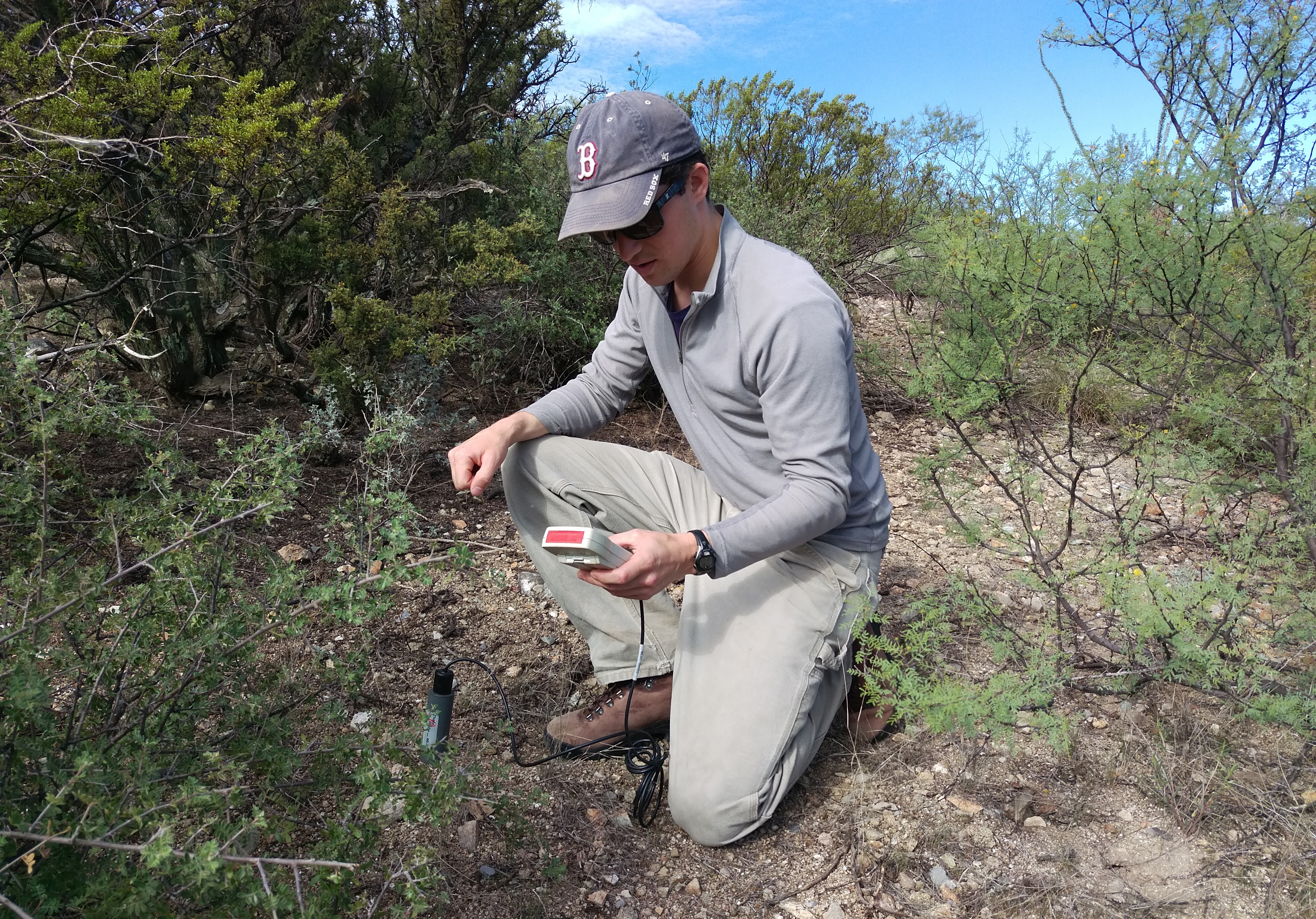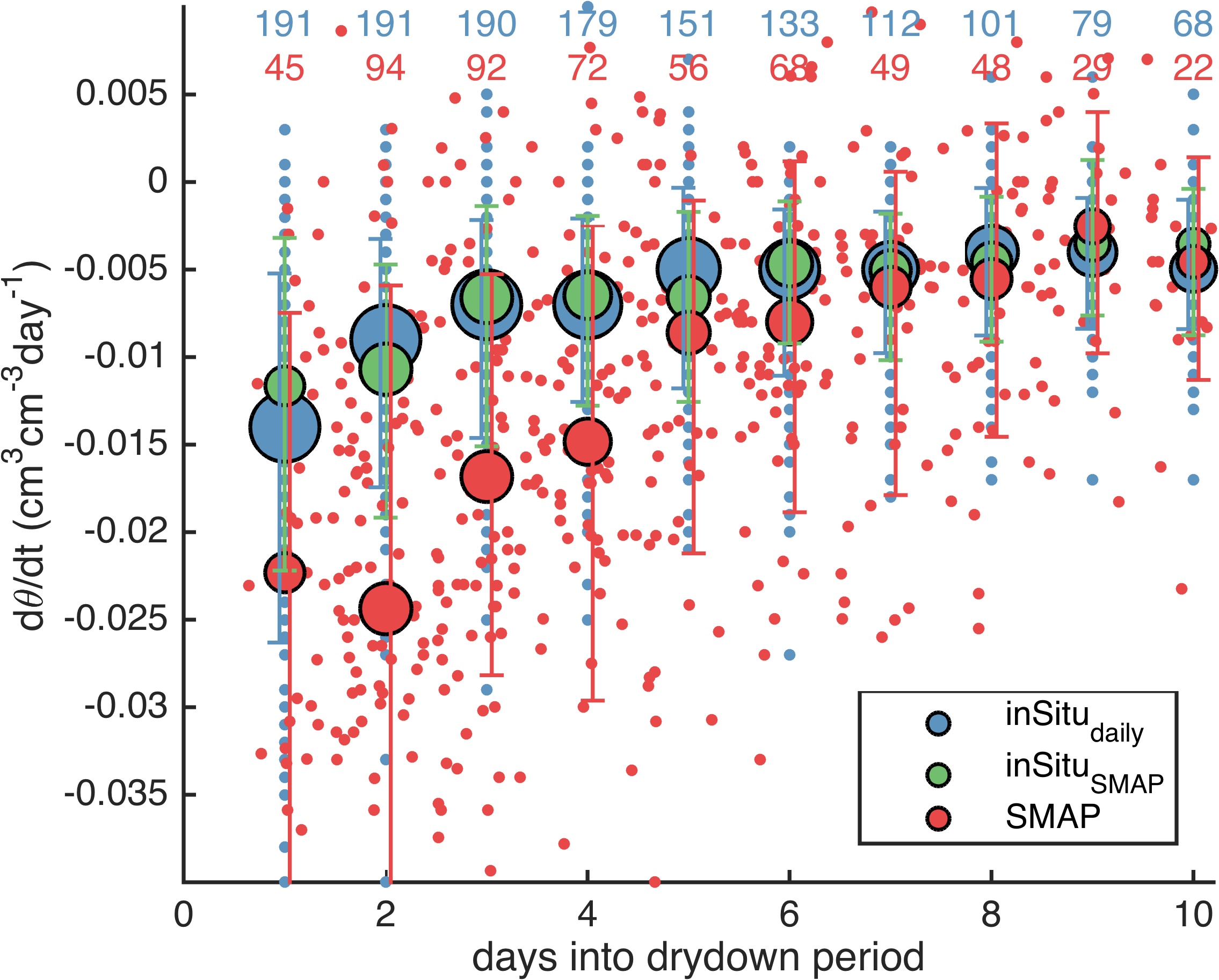Peter Shellito
About |
 |
 |
SMAP soil moisture drying more rapid than observed in situ following rainfall eventsKey points:
Abstract: We examine soil drying rates by comparing surface soil moisture observations from the NASA Soil Moisture Active Passive (SMAP) mission to those from networks of in situ probes upscaled to SMAP's sensing footprint. SMAP and upscaled in situ probes record different soil drying dynamics after rainfall. We modeled this process by fitting an exponential curve to 63 drydown events: the median SMAP drying timescale is 44% shorter and the magnitude of drying is 35% greater than in situ measurements. We also calculated drying rates between consecutive observations from 193 events. For 6 days after rainfall, soil moisture from SMAP dries at twice the rate of in situ measurements. Restricting in situ observations to times of SMAP observations does not change the drying timescale, magnitude, or rate. Therefore, observed differences are likely due to differences in sensing depths: SMAP measures shallower soil moisture than in situ probes, especially after rainfall. |
Calibration of Noah soil hydraulic property parameters using surface soil moisture from SMOS and basinwide in situ observations
|
 |
Undergraduate honors thesis (2009):
The use of lead-210 in the analysis of stream sediment transport dynamicsAwards
John Ebers '61 award: most outstanding undergraduate major in the Earth Sciences, Dartmouth College, 2009.Rufush Choate Scholar: Top 5% of graduating class, Dartmouth College, 2009
Kaminsky Family Fund (Grant), Dartmouth College, 2008
Seth R. and Corrine H. Brooks Memorial Scholarship, Dartmouth College, 2007
Contact
Email: peter.shellito@colorado.eduWeb: http://geode.colorado.edu/~small/PShellito.html
LinkedIn: https://www.linkedin.com/in/peter-shellito-5650b725
Mailing Address:
Peter Shellito
Department of Geological Sciences
University of Colorado Boulder
Campus Box 339
2200 Colorado Ave
Boulder, CO 80309

